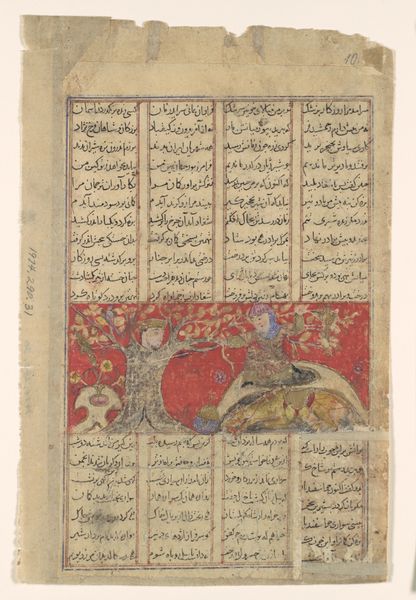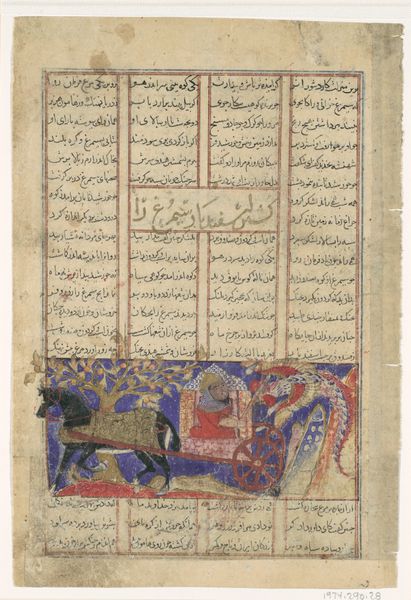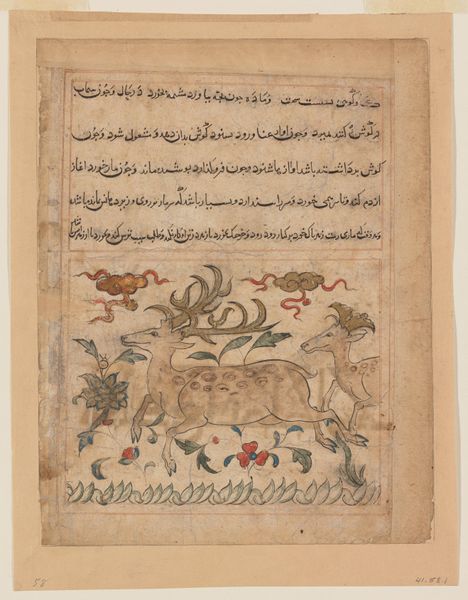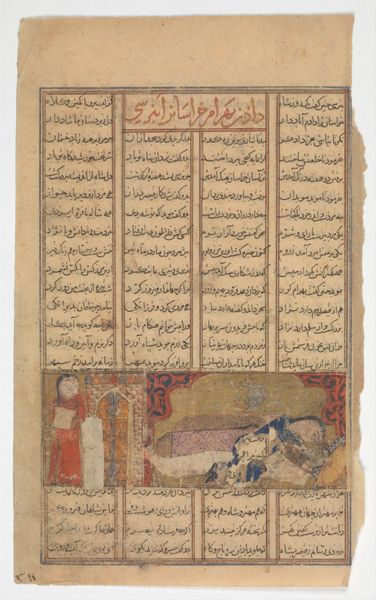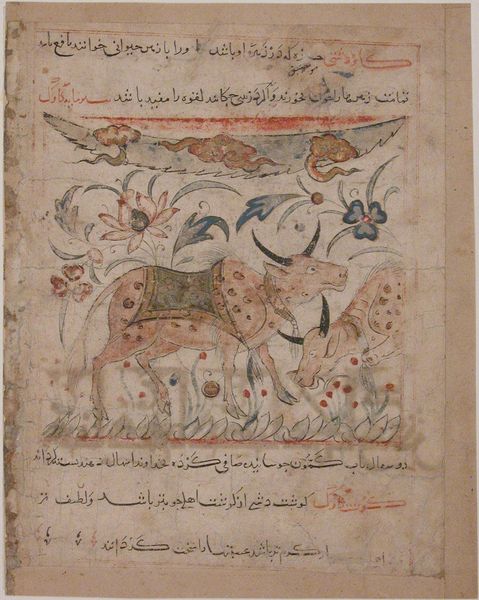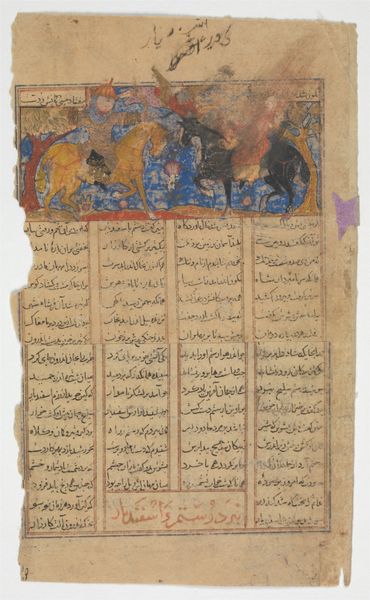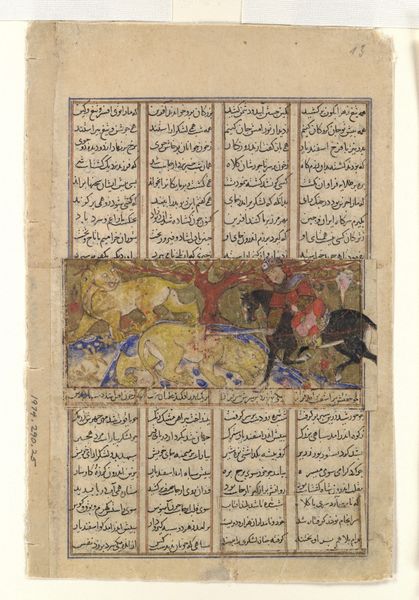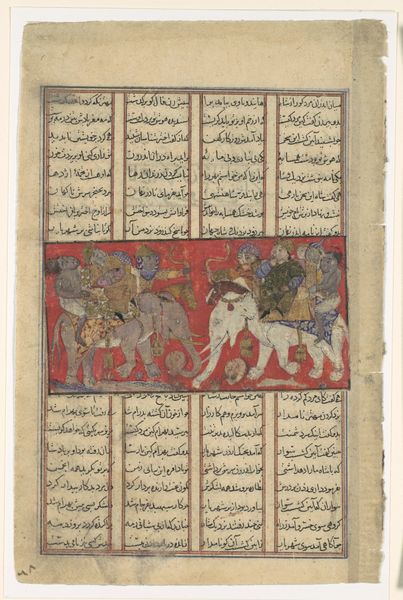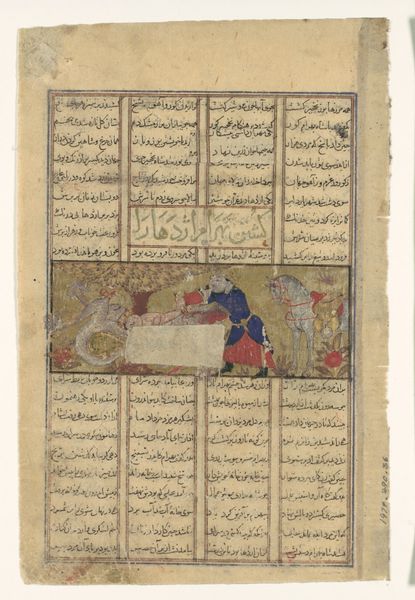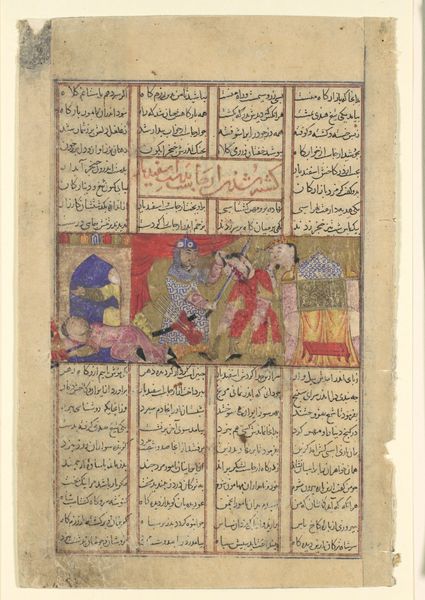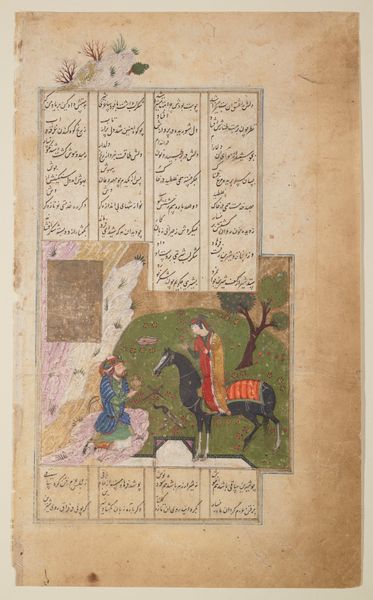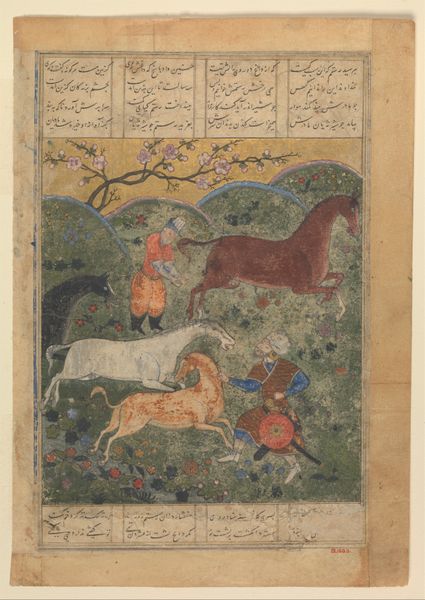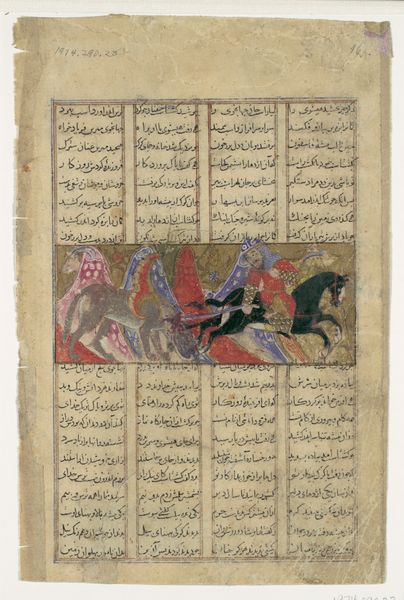
Two Goats from Manafi' al-Hayawan (On the Usefulness of Animals) of Ibn Bakhtishu' c. 1300
0:00
0:00
drawing, coloured-pencil, paper, watercolor, ink
#
drawing
#
coloured-pencil
#
narrative-art
#
animal
#
asian-art
#
paper
#
watercolor
#
ink
#
coloured pencil
#
water
#
islamic-art
#
miniature
Dimensions: 23.7 × 17.5 cm (9 5/16 × 6 7/8 in.)
Copyright: Public Domain
Editor: So, this is an image called "Two Goats from Manafi' al-Hayawan," dating back to around 1300. It’s an ink, watercolor, and colored pencil drawing on paper. What I find striking is the delicate balance between the realism of the goats and the almost dreamlike quality of the floral background. What do you see in this piece? Curator: Immediately, I'm drawn to the relationship between text and image, and how both function as carriers of meaning. The script above and below acts almost as a frame, but it also integrates itself with the visual narrative. This interweaving speaks to a culture that valued the written word as highly as the visual, both being integral parts of knowledge and understanding. Editor: Interesting. I was focused on the animals themselves and the pretty colours of the flowers. Curator: Consider the choice of depicting goats, and how their image would have resonated with the audience. Goats can represent different things across cultures, from pastoral life and sustenance to, in some cases, even stubbornness or wildness. In this context, given that this is from a manuscript about the usefulness of animals, the goats likely symbolize provision and agricultural prosperity. Editor: So it's not just about looking nice, but conveying something specific about the culture at the time? Curator: Exactly! And the floral design, while appearing whimsical, likely draws on established visual motifs in Islamic art, referencing paradise, abundance, and the natural world as a divine gift. Ask yourself, what collective memories and associations were embedded within those symbols? Editor: I never thought about art in this way before, as a vehicle of cultural memory. Curator: It's a powerful perspective to adopt. By decoding the symbolism, we unlock deeper understandings of a work’s intended meaning and the world that produced it. Editor: Thanks! It's like learning a new language. Curator: Indeed, and visual literacy, just like language, helps us to see the world and our history with new eyes.
Comments
No comments
Be the first to comment and join the conversation on the ultimate creative platform.
